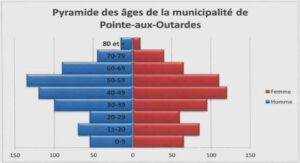Indicators regarding the GDP
After Blanchard’s paper (1990) and due to the difficulties of using other indicators, it is common to observe, in specialized literature, that the mostgenerally used indicator is the evolution of debt-to-GDP ratio. This indicator measures the indebtedness level related to the country’s economic activity. It implicitly assumes that all GDP resources are available to finance the debt burden, which is not necessarily true. However, this indicator is recognized as the most important one to measure the indebtedness degree, stressing the government’s solvency capability. Also, several other indicators have been established using the debt-to-GDP criterion. Some of them try to measure interest payments or debt’s amount in relation to different income scales. The main ratios that use this concept for debt assessment are known as Total Debt Indicators. Some of these refer to debt’s composition, that is, the amount of external and domestic liabilities, fixed, variable and real rate liabilities’ fractions, and the amount of the short, medium and long term debt. These are useful indicators to define debt’s evolution and payment capability; they provide certain signals about the worsening or improvement of government’s position as well.
Related indicators
• Debt balance / domestic budgetary revenues This indicator measures the indebtedness level regarding the government’s payment capacity. It shows the number of required years to pay the total debt balance. A constant debt-to-GDP ratio may produce different outcomes, given that this ratio reflects the country’s size by showing the Government’s possibilities to collect revenues compared to the debt burden.
• Debt service / domestic budgetary revenue This indicator measures the government’s ability to pay the debt’s service with domestic sources. Debt service is the addition of interest and capital.
• Current value / domestic budgetary revenue This indicator measures the current cost of debt’s service, compared with government’s payment capacity.
• Interests / GDP This indicator shows how burdensome for the country interests are. It can also be interpreted as the country’s possibilities to face unproductive expenditures.
• Interests / domestic budgetary revenue This indicator measures the financial costs as a proportion of the tax revenue. This ratio is generally used as a measure of the public income tolerance to an increase in unproductive expenditure.
However, all these indicators are static, since they are related to a certain period, and usually it is more useful to observe their evolution dynamically. This entails the existence of a correlation between interest rates and macroeconomic variables. The study of the indicators’ dynamics allows us to analyze which relationships occur among these variables in time. The basic indicators have been complemented with macroeconomic variables in order to visualize vulnerabilities from other perspectives.





